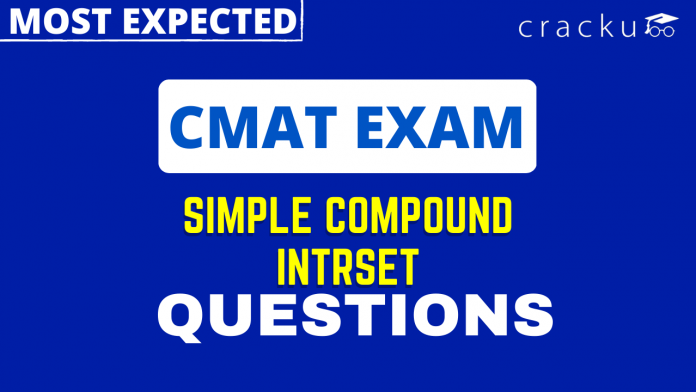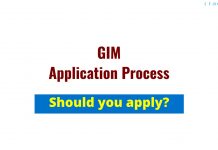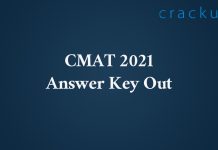Simple Compound and Interest Questions for CMAT
Download CMAT Simple Compound and Intrest questions with solutions PDF by Cracku. Practice CMAT solved Simple Compound and Intrest Questions paper tests, which are the practice question to have a firm grasp on the Simple Compound and Intrest topic in the XAT exam. Top 20 very Important Simple and Compound Intrest Questions for CMAT based on the questions asked in previous exam papers. Click on the link below to download the Simple and Compound Interest Questions for CMAT PDF with detailed solutions.
Download Simple and Compound Interest Questions for CMAT
Enroll to CMAT 2023 Crash Course
Question 1: What is the difference (in ₹) between the compound interest, when interest is compounded 6-monthly, and the simple interest on a sum of ₹10,000 for $1\frac{1}{2}$ years at 10% p.a.?
a) 102.25
b) 87
c) 76.25
d) 91.5
1) Answer (C)
Solution:
If interest is half-yearly, Then
Time = $1.5\times\ 2=3$
Rate = $\frac{10}{2}=\ 5\%$
$A=P\left(1+\frac{r}{100}\right)^n$
= $A=10,000\left(1+\frac{5}{100}\right)^3$
$A=10,000\ \times\ \frac{21}{20}\times\ \frac{21}{20}\times\ \frac{21}{20}=11576.25$
C.I = A – P = 11576.25 – 10000 = ₹1576.35
Simple Interest = $S.I\ =\frac{\left(P\times\ R\times\ T\right)}{100}$
= $\frac{\left(10000\times\ 10\times\ 1.5\right)}{100}$
= ₹1500
Required Difference = ₹1576.25 – ₹1500 = ₹76.25
Hence, Option C is correct.
Question 2: A sum of ₹25600 is invested on simple interest partly at 7% per annum and the remaining at 9% per annum. The total interest at the end of 3 years is ₹5832. How much money(in ₹) was invested at 9% per annum?
a) 18000
b) 7600
c) 9600
d) 16000
2) Answer (B)
Solution:
Let the amount invested in 9% per annum = P
Amount invested in 7% per annum = 25600 – P
The total interest at the end of 3 years is ₹5832.
P x 3 x $\frac{9}{100}$ + (25600 – P) x 3 x $\frac{7}{100}$ = 5832
$\frac{9}{100}$P + 1792 – $\frac{7}{100}$P = 1944
$\frac{2}{100}$P = 152
P = ₹7600
$\therefore$ Amount invested at 9% per annum = P = ₹7600
Hence, the correct answer is Option B
Question 3: Two equal sums were lent on simple interest at 6% and 10% per annum respectively. The first sum was recovered two years later than the second sum and the amount in each case was ₹1105. What was the sum (in ₹) lent in each scheme?
a) 900
b) 850
c) 936
d) 891
3) Answer (B)
Solution:
Let the sum lent in each scheme = P
Let the sum at 6% and 10% simple interest was recovered after ‘t+2’ years and ‘t’ years respectively.
Amount obtained from simple interest at 6% = P + $\frac{P\times(t+2)\times6}{100}$
1105 = P + $\frac{P\times(t+2)\times6}{100}$
1105 – P = $\frac{P\times(t+2)\times6}{100}$…….(1)
Amount obtained from simple interest at 10% = P + $\frac{P\times t\times10}{100}$
1105 = P + $\frac{P\times t\times10}{100}$
1105 – P = $\frac{P\times t\times10}{100}$……..(2)
From (1) and (2),
$\frac{P\times(t+2)\times6}{100}$ = $\frac{P\times t\times10}{100}$
6t + 12 = 10t
t = 3
Substituting t = 3 in equation (2), we get P = 850
The sum lent in each scheme = ₹850
Hence, the correct answer is Option B
Question 4: A sum of ₹9500 amounts to ₹11495 in 2 years at a certain rate percent per annum, interest compounded yearly. What is the simple interest (in ₹) on the same sum for the same time and double the rate?
a) 3990
b) 3420
c) 4560
d) 3800
4) Answer (D)
Solution:
Let the rate of interest = R
11495 = 9500(1+$\frac{R}{100}$)$^2$
(1+$\frac{R}{100}$)$^2$ = $\frac{11495}{9500}$
(1+$\frac{R}{100}$)$^2$ = $\frac{121}{100}$
1+$\frac{R}{100}$ = $\frac{11}{10}$
$\frac{R}{100}$ = $\frac{1}{10}$
R = 10%
Simple interest = $\frac{9500\times2\times20}{100}$
= ₹3800
Hence, the correct answer is Option D
Question 5: A person borrowed a sum of ₹30800 at 10% p.a. for 3 years, interest compounded annually. At the end of two years, he paid a sum of ₹13268. At the end of 3rd year, he paid ₹ x to clear of the debt. What is the value of x ?
a) 26400
b) 26510
c) 26200
d) 26620
5) Answer (A)
Solution:
Amount to be paid after 2 years = 30800(1+$\frac{10}{100}$)$^2$
= 30800($\frac{11}{10}$)$^2$
= 30800($\frac{121}{100}$)
= ₹37268
Amount paid by the person = ₹13268
Remaining amount = ₹37268 – ₹13268 = ₹24000
Amount to be paid at the end of 3rd year to clear debt(i.e, compound interest on ₹24000 for next 1 year) = 24000(1+$\frac{10}{100}$)$^1$
$\Rightarrow$ x = 24000($\frac{11}{10}$)
$\Rightarrow$ x = ₹26400
Hence, the correct answer is Option A
Question 6: At what rate percent per annum will ₹7200 amountto ₹7938 in one year, if interest is compounded half yearly?
a) 5
b) 8
c) 12
d) 10
6) Answer (D)
Solution:
Let the rate of interest per annum = R
According to the problem,
7938 = 7200(1+$\frac{\frac{R}{2}}{100}$)$^2$
3969 = 3600(1+$\frac{\frac{R}{2}}{100}$)$^2$
441 = 400(1+$\frac{\frac{R}{2}}{100}$)$^2$
(1+$\frac{\frac{R}{2}}{100}$)$^2$ = $\frac{441}{400}$
1+$\frac{\frac{R}{2}}{100}$ = $\frac{21}{20}$
$\frac{R}{200}$ = $\frac{1}{20}$
R = 10%
Hence, the correct answer is Option D
Question 7: A sum at simple interest becomes two times in 8 years at a certain rate of interest p.a. The time in which the same sum will be 4 times at the same rate of interest at simple interest is:
a) 25 years
b) 20 years
c) 30 years
d) 24 years
7) Answer (D)
Solution:
Let the principal amount = P
Rate of interest = R
Time = 8 years
Amount = 2P
$\Rightarrow$ 2P = Principal amount + Simple Interest
$\Rightarrow$ 2P = P + $\frac{\text{P}\times8\times \text{R}}{100}$
$\Rightarrow$ P = $\frac{\text{P}\times8\times \text{R}}{100}$
$\Rightarrow$ R = 12.5%
Let the time in which sum will be 4 times at the same rate of interest = T
i.e, Amount = 4P
$\Rightarrow$ 4P = P + $\frac{\text{P}\times \text{T}\times12.5}{100}$
$\Rightarrow$ 3P = $\frac{\text{P}\times \text{T}\times12.5}{100}$
$\Rightarrow$ 3 = $\frac{\text{T}}{8}$
$\Rightarrow$ T = 24 years
$\therefore\ $The time in which the same sum will be 4 times at the same rate of interest = 24 years
Hence, the correct answer is Option D
Question 8: Suresh lent out a sum of money to Rakesh for 5 years at simple interest. At the end of 5 years, Rakesh paid 9/8 of the sum to Suresh to clear out the amount. Find the rate of simple interest per annum.
a) 3.5% p.a.
b) 2.5% p.a.
c) 3% p.a.
d) 2% p.a.
8) Answer (B)
Solution:
Let the sum of money lent out by Suresh to Rakesh = P
Amount paid by Rakesh to Suresh after 5 years = $\frac{9}{8}$P
Let the rate of simple interest = R%
$\Rightarrow$ P + $\frac{\text{P}\times5\times \text{R}}{100}$ = $\frac{9}{8}$P
$\Rightarrow$ 1 + $\frac{R}{20}$ = $\frac{9}{8}$
$\Rightarrow$ $\frac{R}{20}$ = $\frac{9}{8}-1$
$\Rightarrow$ $\frac{R}{20}$ = $\frac{1}{8}$
$\Rightarrow$ R = 2.5%
$\therefore\ $Rate of simple interest per annum = 2.5%
Hence, the correct answer is Option B
Question 9: If the difference between the compound interest and simple interest on a certain sum of money for three years at 10% p.a. is ₹ 558, then the sum is:
a) ₹ 18,500
b) ₹ 15,000
c) ₹ 16,000
d) ₹ 18,000
9) Answer (D)
Solution:
Let the principal sum = P
Rate = 10%
Time = 3 years
Compound interest on the sum = P$\left(1+\frac{10}{100}\right)^3-$ P = P$\left(\frac{110}{100}\right)^3-$ P = P$\frac{1331}{1000}-$ P = $\frac{331}{1000}$P
Simple interest on the sum = $\frac{P\times3\times10}{100}$ = $\frac{3}{10}$P
According to the problem,
$\frac{331}{1000}$P $-$ $\frac{3}{10}$P = 558
$\Rightarrow$ $\frac{331P-300P}{1000}$ = 558
$\Rightarrow$ $\frac{31P}{1000}$ = 558
$\Rightarrow$ P = 18000
$\therefore\ $The principal sum = ₹ 18,000
Hence, the correct answer is Option D
Question 10: The sum of simple interest on a sum at 8% p.a. for 4 years and 8 years is ₹960. The sum is:
a) ₹800
b) ₹1100
c) ₹1000
d) ₹900
10) Answer (C)
Solution:
Let the Principal amount = P
Rate = 8%
Given, the sum of simple interest on P for 4 years and 8 years is ₹960
$\Rightarrow$ $\frac{P\times4\times8}{100}+\frac{P\times8\times8}{100}=960$
$\Rightarrow$ $\frac{32P}{100}+\frac{64P}{100}=960$
$\Rightarrow$ $\frac{96P}{100}=960$
$\Rightarrow$ P = 1000
$\therefore\ $The required sum = ₹1000
Hence, the correct answer is Option C
Question 11: The difference between the compound interest on a sum of ₹ 8,000 for 1 year at the rate of 10% per annum, interest compounded yearly and half yearly is:
a) ₹40
b) ₹10
c) ₹30
d) ₹20
11) Answer (D)
Solution:
Given, Principal amount = ₹ 8,000
Rate = 10%
When the interest is compounded yearly, time period = 1 year
Compound interest when compounded yearly = $8000\left(1+\frac{10}{100}\right)^1=8000\left(\frac{110}{100}\right)=8800$
When the interest is compounded yearly, time period = 2 half-years
Rate = $\frac{10}{2}$ = 5%
Compound interest when compounded half yearly = $8000\left(1+\frac{5}{100}\right)^2=8000\left(\frac{105}{100}\right)^2=8820$
$\therefore$ Required difference = 8820 – 8800 = ₹20
Hence, the correct answer is Option D
Question 12: There is a 60% increase in an amount in 5 years at simple interest. What will be the compound interest on ₹ 6,250 for two years at the same rate of interest, when the interest is compounded yearly?
a) ₹ 1,480
b) ₹ 1,560
c) ₹ 1,500
d) ₹ 1,590
12) Answer (D)
Solution:
Let the rate of interest = R%
Principal amount = P
Time = 5 years
$\Rightarrow$ Amount = $\frac{160}{100}P$
$\Rightarrow$ P + $\frac{P\times5\times R}{100}$ = $\frac{160}{100}\text{P}$
$\Rightarrow$ $\frac{P\times5\times R}{100}$ = $\frac{160}{100}\text{P}$ – $\text{P}$
$\Rightarrow$ $\frac{P\times5\times R}{100}$ = $\frac{60}{100}\text{P}$
$\Rightarrow$ R = 12%
Compound interest on ₹ 6,250 for two years at 12% = $6250\left(1+\frac{12}{100}\right)^2-6250$
$=6250\left(\frac{112}{100}\right)^2-6250$
$=6250\left(1.12\right)^2-6250$
$=6250\left(1.2544\right)-6250$
$=6250\left(0.2544\right)$
$=$ ₹ 1590
Hence, the correct answer is Option D
Question 13: If the present amount is ₹ 87,750 with 8% rate of interest in four years, then what was the principal amount?
a) ₹ 69,345.6
b) ₹ 78,456.34
c) ₹ 56,896.98
d) ₹ 66,477.2
13) Answer (D)
Solution:
Given, Amount = ₹ 87,750
Rate = 8%
Time = 4 years
Let Principal amount = P
$\Rightarrow$ P + $\frac{P\times4\times8}{100}=87750$
$\Rightarrow$ P + $\frac{32P}{100}=87750$
$\Rightarrow$ $\frac{132P}{100}=87750$
$\Rightarrow$ $\frac{P}{100}=664.7727$
$\Rightarrow$ P = 66477.27
$\therefore\ $Principal amount = ₹ 66477.27
Hence, the correct answer is Option D
Question 14: A man has ₹10,000. He lent a part of it at 15% simple interest and the remaining at 10% simple interest. The total interest he received after 5 years amounted to ₹6,500. The difference between the parts of the amounts he lent is:
a) ₹1,750
b) ₹2,500
c) ₹2,000
d) ₹1,500
14) Answer (C)
Solution:
Given,
Total Amount = ₹10,000
Let the amount lent at 15% = $x$
$=$> Amount lent at 10% = $10000-x$
Total interest he received after 5 years amounted to ₹6,500
$=$> $\frac{x\times15\times5}{100}+\frac{\left(10000-x\right)\times10\times5}{100}=6500$
$=$> $\frac{3x}{4}+\frac{1}{2}\left(10000-x\right)=6500$
$=$> $\frac{3x}{4}-\frac{x}{2}+5000=6500$
$=$> $\frac{3x-2x}{4}=6500-5000$
$=$> $\frac{x}{4}=1500$
$=$> $x=6000$
$\therefore\ $Difference between the parts of amounts he lent = $x-\left(10000-x\right)=6000-\left(10000-6000\right)=$₹ 2000
Hence, the correct answer is Option C
Question 15: Ram deposited an amount of ₹ 8,000 in a bank’s savings account with interest 6.5% compounded monthly. What amount will he get at the end of 18 months?
a) $₹ 8816.97$
b) $₹ 8788.98$
c) $₹ 8907.56$
d) $₹ 8790.54$
15) Answer (A)
Solution:
Given,
Principal amount (P) = ₹ 8,000
Rate of interest (R) = 6.5% per annum = $\frac{6.5}{12}\%$ per month
Time (n) = 18 months
$\therefore\ $Amount = $P\left(1+\frac{R}{100}\right)^n$
$=8000\left(1+\frac{6.5}{12\times100}\right)^18$
$=8000\left(1+0.0054167\right)^{18}$
$=8000\left(1.0054167\right)^{18}$
$=$₹ 8816.97
Hence, the correct answer is Option A
Question 16: Latha deposited an amount of $₹ 35,000$ in a bank with simple interest 11% per annum. How much interest will she earn after one year?
a) $₹ 3,370$
b) $₹ 3,220$
c) $₹ 3,500$
d) $₹ 3,850$
16) Answer (D)
Solution:
Given,
Principal amount (P) = $₹ 35,000$
Rate of Simple interest (R)% = 11%
Time (T) = 1 year
$\therefore\ $Simple interest earned by Latha = $\frac{\text{PTR}}{100}=\frac{35000\times1\times11}{100}=₹ 3,850$
Hence, the correct answer is Option D
Question 17: The difference of simple interest on a sum of money for 8 years and 10 years is $₹ 200.$ If the rate of interest is 10 % p.a, then what is the sum of money?
a) $₹ 1,600$
b) $₹ 1,000$
c) $₹ 1,200$
d) $₹ 1,400$
17) Answer (B)
Solution:
Let the Principal amount = P
Given, rate of interest = 10%
The difference of simple interest on the sum of money for 8 years and 10 years is $₹ 200$
$=$> $\frac{P\times10\times10\ }{100}-\frac{P\times8\times10}{100}=200$
$=$> $\frac{100P\ }{100}-\frac{80P}{100}=200$
$=$> $\frac{20P\ }{100}=200$
$=$> $P=₹ 1000$
$\therefore\ $Sum of money = $₹ 1000$
Hence, the correct answer is Option B
Question 18: At which rate of simple interest does an amount become double in 12 years?
a) $7 \frac{4}{5}%$
b) $7 \frac{1}{2}%$
c) $8%$
d) $8 \frac{1}{3}%$
18) Answer (D)
Solution:
Given,
Time (T) = 12 years
Let the Principal amount = P
Rate of Simple Interest = R
According to the Problem,
Amount = 2P
$=$> Principal + Simple Interest = 2P
$=$> P + $\frac{\text{P}\times\text{T}\times \text{R}}{100}$ = 2P
$=$> $\frac{\text{P}\times12\times \text{R}}{100}$ = 2P – P
$=$> $\frac{\text{P}\times12\times \text{R}}{100}$ = P
$=$> $\text{R}=\frac{100}{12}$
$=$> $\text{R}=8\frac{1}{3}$%
Hence, the correct answer is Option D
Question 19: A person invested a total of ₹9,000 in three parts at 3%, 4% and 6% per annum on simple interest. At the end of a year, he received equal interest in all the three cases. The amount invested at 6% is:
a) $₹3,000$
b) $₹5,000$
c) $₹2,000$
d) $₹4,000$
19) Answer (C)
Solution:
Let the amount invested by the person at 3%, 4% and 6% are $x$, $y$, $z$ respectively
$=$> $x+y+z=9000$ ………….(1)
Interest on amount $x$ at 3% after 1 year = $\frac{x\times3\times1}{100}=\frac{3x}{100}$
Interest on amount $y$ at 4% after 1 year = $\frac{y\times4\times1}{100}=\frac{4y}{100}$
Interest on amount $z$ at 6% after 1 year = $\frac{z\times6\times1}{100}=\frac{6z}{100}$
Given, interest received after 1 year on $x$, $y$, $z$ amounts are equal
$=$> $\frac{3x}{100}=\frac{4y}{100}=\frac{6z}{100}$
$=$> $3x=4y=6z$ ……………….(2)
Sustituting values from (2) in (1)
$=$> $x+\frac{3}{4}x+\frac{3}{6}x=9000$
$=$> $x+\frac{3}{4}x+\frac{1}{2}x=9000$
$=$> $\frac{4x+3x+2x}{4}=9000$
$=$> $\frac{9x}{4}=9000$
$=$> $x=4000$
$\therefore\ $ $y=\frac{3}{4}x=\frac{3}{4}\times4000=3000$ and
$z=\frac{3}{6}x=\frac{3}{6}\times4000=2000\ $
$\therefore\ $The amount invested at 6% Simple interest = $₹2,000$
Hence, the correct answer is Option C
Question 20: In how may years will a sum of $₹ 320$ amount to $₹ 405$ if interest is compounded at 12.5% per annum?
a) 2 years
b) 1 year
c) $1 \frac{1}{2}$ years
d) $2 \frac{1}{2}$ years
20) Answer (A)
Solution:
Given,
Principal (P) = $₹ 320$
Rate (R)% = 12.5%
Amount (A) = $₹ 405$
Let the required number of years = n
$=$> $\text{P}\left(1+\frac{\text{R}}{100}\right)^n=405$
$=$> $320\left(1+\frac{12.5}{100}\right)^n=405$
$=$> $320\left(\frac{112.5}{100}\right)^n=405$
$=$> $\left(\frac{1125}{1000}\right)^n=\frac{405}{320}$
$=$> $\left(\frac{9}{8}\right)^n=\frac{81}{64}$
$=$> $\left(\frac{9}{8}\right)^n=\frac{9^2}{8^2}$
$=$> $\left(\frac{9}{8}\right)^n=\left(\frac{9}{8}\right)^2$
$=$> $n=2$
Hence, the correct answer is Option A





